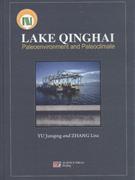
LAKE QINGHAI-Paleoenvironment and Paleoclimate
1星价
¥118.5
(7.9折)
2星价¥118.5
定价¥150.0

暂无评论
图文详情
- ISBN:9787030229090
- 装帧:一般胶版纸
- 册数:暂无
- 重量:暂无
- 开本:其它
- 页数:160
- 出版时间:2009-02-01
- 条形码:9787030229090 ; 978-7-03-022909-0
内容简介
《青海湖古气候与古环境(英文版)》以青藏高原东北部六万.0以来的气候与环境演变为主要研究内容,以多学科方法研究获得了青海湖岩芯多项环境指标,并以此为依据,分析和论证了青海湖MIS3、MIS2、末次冰期向全新世过渡时期,以及全新世等各时段的水位与气候变化,及其与东亚季风演变的关联。
目录
1 Introduction1.1 Aim and scope1.2 Previous investigations1.2.1 1961-1962 expeditions to Lake Qinghai1.2.2 Sino-Swiss expedition in 19851.2.3 1987 drill-core project1.2.4 Post-1990 investigations1.3 Paleoclimate study of China: a brief review1.3.1 East Asian monsoon——the modem climate system1.3.2 East Asian paleomonsoon2 Geographic, Geological and Limnological Setting of Lake Qinghai2.1 Geological setting2.2 Geomorphological setting2.3 Geographic setting2.3.1 Climate2.3.2 Vegetation2.3.3 Rivers in the catchment2.4 Limnological setting2.4.1 Water chemistry2.4.2 Physical characteristics2.4.3 Biological characteristics2.5 Peripheral lakes2.5.1 Lake Erhai2.5.2 Lake Gahai2.5.3 Haiyan Bay2.5.4 Sand-Island Lake3 Investigation Methods3.1 Introduction3.2 Field investigation3.2.1 Seismic profiling3.2.2 Coring3.3 Laboratory investigation3.3.1 Radiometric dating3.3.2 Magnetic susceptibility: core logging3.3.3 Total organic carbon and total nitrogen, and C/N ratio3.3.4 Macrofossil indicator3.3.6 X-ray diffraction and scanning electron microscopy (SEM)3.3.7 Oxygen and carbon stable isotopes3.4 Notes on investigation methods4 Seismic Investigation, Lithologie Study of Sediment Cores and Radiometrie Dating4.1 Introduction4.2 Sub-bottom profiles from the 3.5 kHz seismic investigations4.3 Radiometric dating4.3.1 Radiocarbon dating and sedimentation rates4.3.2 pb dating and sediment accumulation rates4.4 Lithologic units4.4.1 Lithologic units of core Q14B4.4.2 Lithologic units of core Q 16C4.4.3 Core correlation and boundary description5 Lake Levels and Climate Change During the Holoeene5.1 Introduction5.2 Results and interpretations5.2.1 14C dated lithostratigraphy5.2.2 TOC, TN and C/N ratio5.2.3 TCC and carbonate mineral record5.2.4 Fossil seeds from rooted aquatic plant5.2.5 Ostracode shell stable-isotopic record5.2.6 Pollen record5.2.7 Magnetic susceptibility5.3 Holocene lake levels and climate reconstruction5.4 A correlation with proxy records from other studies5.5 Holocene climate variability of East Asia5.5.1 Early Holocene climate regime5.5.2 Mid-Holocene climate and Holocene Optimum5.5.3 Late Holocene climate5.5.4 Climate forcing and feedbacks during the Holocene5.6 Summary and conclusions6 Abrupt Changes in Climatic Conditions Across the Lateglacial/Holoeene Transitionon the NE Qinghai-Tibet Plateau6.1 Introduction6.2 Results from a multi-proxy investigation on cores Q14B and Q 16C6.2.1 Distinct lithostratigraphic units6.2.2 Paleobotanic evidence6.2.3 Core logs of magnetic susceptibility6.2.4 Carbonate content and mineralogical record6.2.5 Oxygen stable-isotopic record6.2.6 Total nitrogen content6.3 Reconstruction of lake levels and limnological conditions6.4 Abrupt shifts in hydro-climatic conditions6.5 Correlation with other paleoenvironmental records in China6.6 Conclusions7 Paleoenvironmental Signatures from Carbonate Minerals and Stable Isotopic Ratios from Lake Qinghai7.1 Introduction7.2 Modern carbonate environments7.3 Carbonate minerals in the sediment cores7.4 Lake Qinghai dolomite and inferred paleoenvironment7.4.1 Lithology, mineralogy, organic carbon and nitrogen, and isotopic composition7.4.2 Geochemical and paleoenvironmental conditions for the dolomite formation7.5 Brine evolution deduced from the carbonate mineral record7.5.1 Mg/Ca ratio7.5.2 Carbonate production and salinity7.6 Stable isotopic ratios and their covariance7.6.1 Isotopic covariance7.6.2 Isotope results from Lake Qinghai7.6.3 Discussion7.7 Summary and conclusions8 Paleoenvironment and Paleoclimate Conditions During the Marine Isotopic Stage 3 and the Last Glacial Maximum8.1 Introduction8.2 Results and interpretations8.2.1 Seismic reflection Profile No. 18.2.2 Sediment core Q878.2.3 AMS 14C dating and analytical measurements of Q878.2.4 Carbonate mineral record8.2.5 Total organic carbon, total nitrogen and C/N ratio8.3 Climatic conditions at the MIS 3 and the LGM
8.4 Correlation with other proxy records in the region8.4.1 The Marine Isotope Stage 3 (MIS 3)8.4.2 The Last Glacial Maximum (LGM)8.4.3 Correlation with glaciation records8.5 Summary and conclusionsReferencesAcknowledgments
展开全部
本类五星书
本类畅销
-

世纪幽灵-走近量子纠缠
¥9.9¥28.0 -

昆虫的生存之道
¥12.2¥38.0 -

勒维特之星-大发现系列丛书
¥4.0¥16.0 -

昆虫采集制作及主要目科简易识别手册
¥15.0¥50.0 -

技术史入门
¥14.4¥48.0 -

物理学之美-插图珍藏版
¥29.0¥69.0 -

天文学卷-异想天开-古今中外天文简史-《中国大百科全书》普及版
¥5.1¥19.0 -

几何原本
¥44.0¥93.6 -

艾萨克·牛顿、理性时代与现代科学的肇始(八品-九品)
¥24.0¥96.0 -

现代科技中的天文学
¥4.6¥13.0 -

怎样解题
¥24.1¥29.0 -

天演论-英文版
¥13.3¥36.0 -

菌络万象
¥66.0¥88.0 -

脑科学:大脑进化简史
¥37.1¥58.0 -

数据建模与计算案例
¥77.4¥98.0 -

《生物化学》笔记和课后习题(含考研真题)详解
¥50.2¥88.0 -

曲线与曲面的工程微分几何学
¥235.4¥298.0 -

经典数值算法及其Maple实现
¥67.2¥79.0 -

气候文明史
¥42.8¥69.0 -

笛卡尔几何
¥32.6¥48.0












